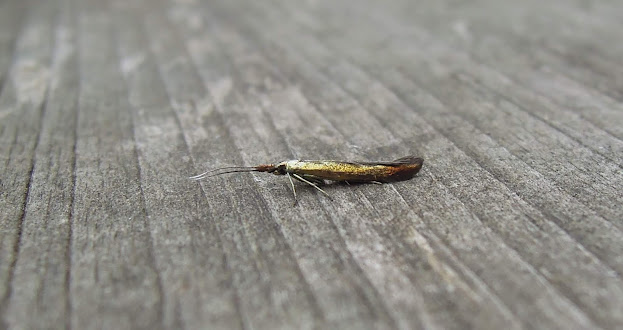It was the hottest night here since like ever so I was looking forward to the results in the trap. A storm in the early hours did affect things however although there were well over 100 species again.
White-line Dart is new for the garden and only my second recorded in the village:
Another day another pyralid, although this time the new garden record involved a more widespread species Acrobasis repandana. Unfortunately in the process of trying to get it into a pot it made its escape, so this is the only shot obtained:
I've had a few Caloptilia species this year and another new one turned up, C. stigmatella:
Another species I've recorded just once in the village before is the striking tortrix Epiblema foenella. However, this one is a fairly dull individual, the white blotch on the forewing is normally bright white:
The final new one was Mompha epilobiella, an apparently common species which I haven't come across before:
The best of the rest included the gardens second record of Recurvaria nanella, a fairly rare species of gelechiid:
[537] Caloptilia stigmatella
[538] Mompha epilobiella
[539] Epiblema foenella
[540] Acrobasis repandana
[541] White-line Dart
White-line Dart is new for the garden and only my second recorded in the village:
 |
| White-line Dart Euxoa tritici |
 |
| Acrobasis repandana |
 |
| Caloptilia stigmatella |
Another species I've recorded just once in the village before is the striking tortrix Epiblema foenella. However, this one is a fairly dull individual, the white blotch on the forewing is normally bright white:
 |
| Epiblema foenella |
 |
| Mompha epilobiella |
 |
| Recurvaria nanella |
[538] Mompha epilobiella
[539] Epiblema foenella
[540] Acrobasis repandana
[541] White-line Dart









































